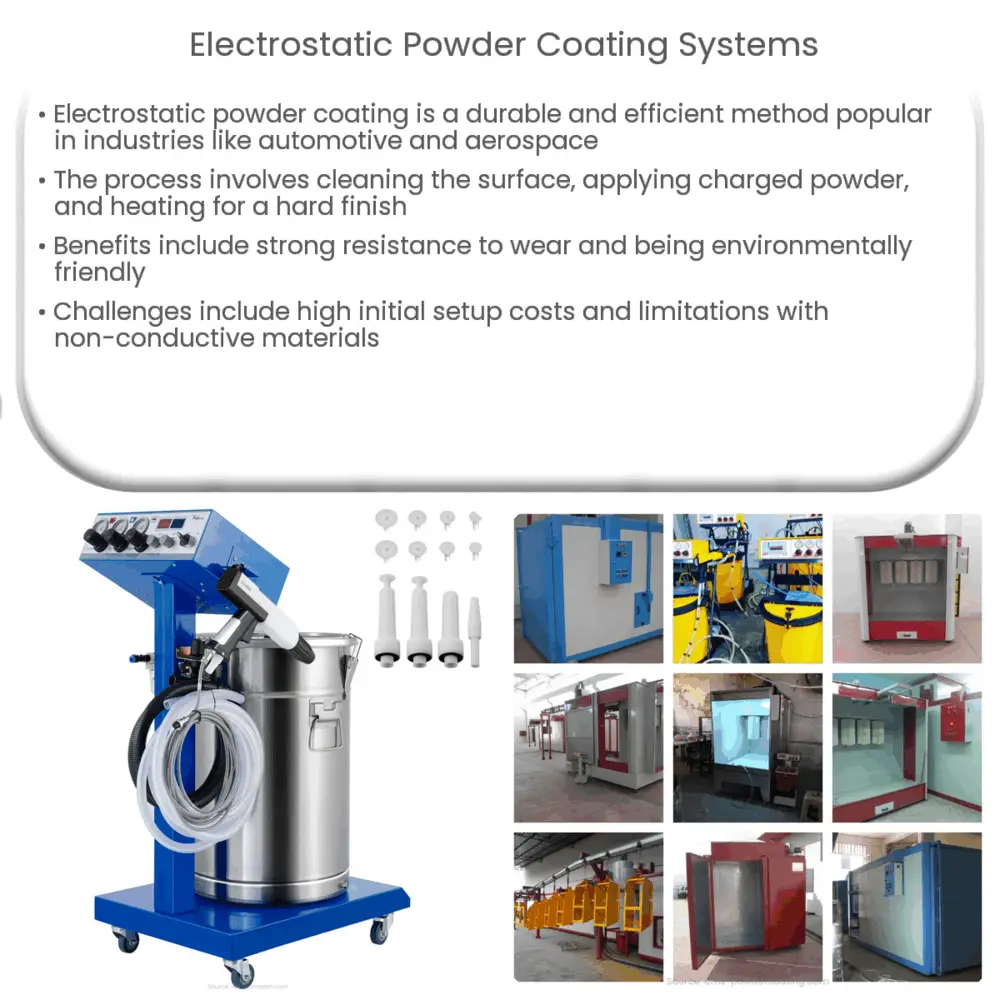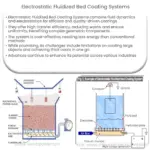Explore the principles, benefits, and applications of electrostatic powder coating systems in various industries. Uncover its efficiency, durability, and eco-friendly attributes.

Introduction to Electrostatic Powder Coating Systems
Electrostatic powder coating is a technique widely adopted in the industrial and automotive sectors for its efficiency and durability. This approach is based on the principle of electrostatic attraction. The article outlines the concepts behind this process, its benefits, and applications in various industries.
Principles of Electrostatic Powder Coating
Electrostatic powder coating relies on the electrostatic principle, where a dry powder containing finely ground particles of pigment and resin is sprayed onto a surface to be coated. The powder is charged using an electrostatic gun (also referred to as a powder coating gun) that imparts a negative charge to the powder particles. The workpiece to be coated is grounded, creating an electrostatic attraction between the particles and the surface.
Process of Electrostatic Powder Coating
The process of electrostatic powder coating is a multistage sequence, typically involving the following steps:
- Preparation of the Surface: This involves cleaning the surface to remove any oil, dust, or rust that may interfere with the adhesion of the powder.
- Application of Powder: The dry powder is then sprayed onto the workpiece using an electrostatic gun.
- Curing: After the application, the workpiece is heated in a curing oven. The heat causes the powder to melt and form a hard, durable finish.
Benefits of Electrostatic Powder Coating
Electrostatic powder coating comes with several advantages, making it a preferred choice for surface finishing:
- Durability: Once cured, the finish is extremely resistant to chips, scratches, and wear, much more than traditional paint.
- Efficiency: The process is efficient as the powder is attracted to the workpiece, reducing waste and overspray.
- Eco-friendly: Powder coating is environmentally friendly as it doesn’t contain solvents or release volatile organic compounds (VOCs) into the atmosphere.
While the benefits are substantial, it’s also important to note potential challenges, such as the need for appropriate equipment and a suitable environment for the process.
Applications of Electrostatic Powder Coating
The applications of electrostatic powder coating are vast and varied across industries. Here are a few prominent examples:
- Automotive Industry: It is used extensively in the automotive industry for coating vehicle parts such as wheels, bumpers, radiators, engine parts, and much more.
- Aerospace: In the aerospace industry, it’s utilized to coat components that require a durable, corrosion-resistant finish.
- Industrial Equipment: The process is also prevalent in the manufacturing of machinery and equipment, especially those exposed to harsh operating conditions.
- Home Appliances: Many domestic appliances like washing machines, refrigerators, and ovens have powder-coated surfaces for aesthetics and durability.
Potential Challenges in Electrostatic Powder Coating
Despite the numerous advantages, there are potential challenges with electrostatic powder coating that must be considered:
- Investment: Initial setup for powder coating can be quite high, as it involves specialized equipment like electrostatic guns and curing ovens.
- Limited to Conductive Materials: The process works best with conductive materials, limiting its application to non-conductive surfaces unless specific measures are taken.
- Color Change: Color changes during a run can be time-consuming as the entire system needs to be thoroughly cleaned to avoid color contamination.
Conclusion
In conclusion, electrostatic powder coating systems are an efficient, durable, and environmentally friendly method for applying finishes to a variety of surfaces. The technique offers significant benefits over traditional painting methods, although it also presents a few challenges. Despite these, it remains a popular choice in industries ranging from automotive to home appliances. As technological advancements continue, the process is likely to become more versatile and efficient, widening its scope and usability further.




